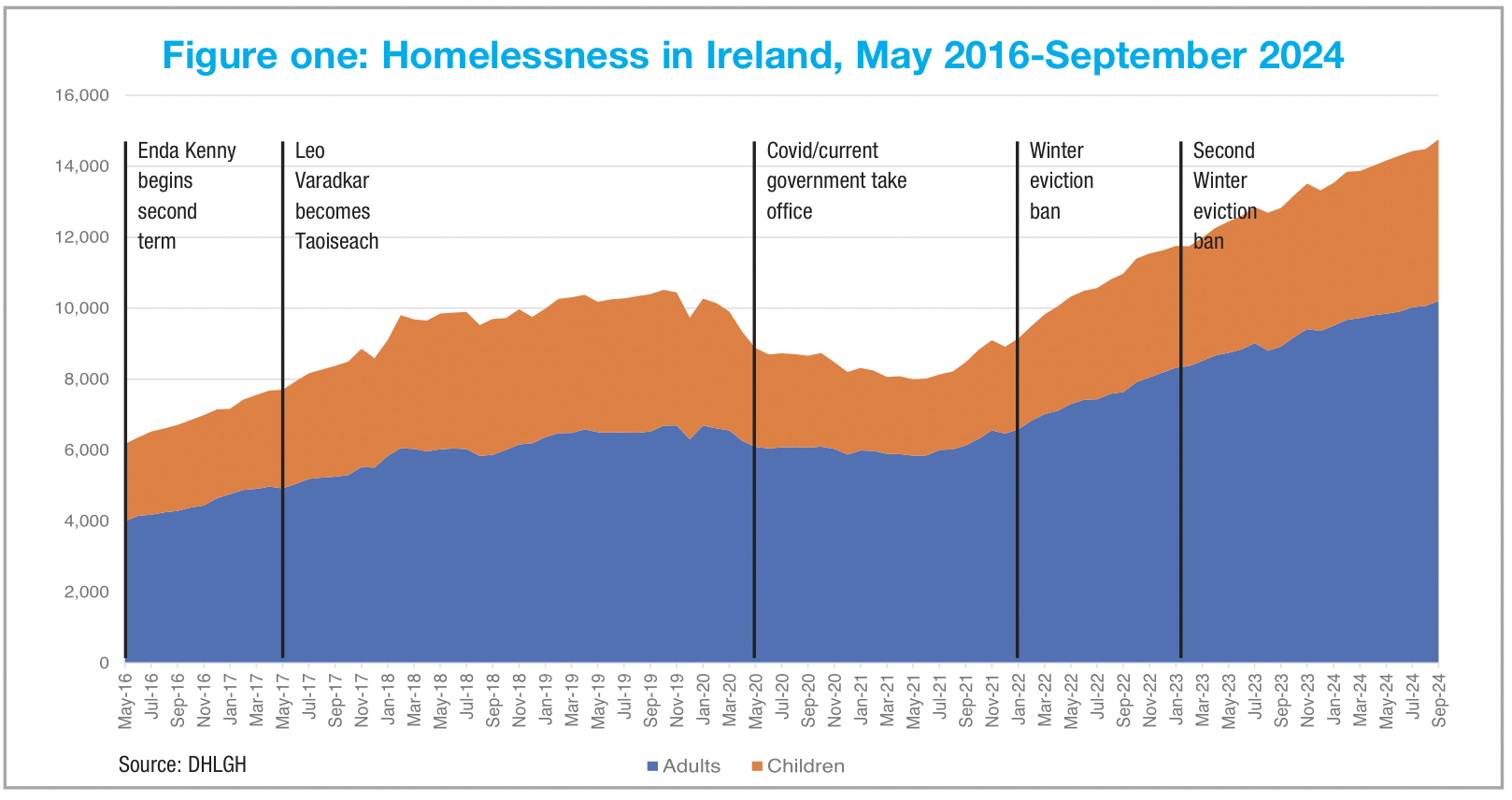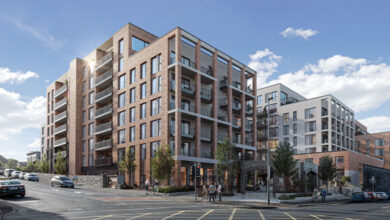Ireland’s record homelessness

In what are likely to be the last homelessness numbers released by the current government before the Dáil is dissolved for a general election, it has been revealed that a new record of 14,760 people are living in homeless emergency accommodation.
Since the Government came to power in June 2020, homelessness has been recorded at the end of every month, and the latest release by the Department of Housing, Local Government and Heritage, marks the 23rd time that homelessness has reached a record high in the lifetime of the incumbent administration, for which 51 months of data are available.
The figures, which cover the week from 23 to 29 September 2024, show that 14,760 are accessing emergency accommodation, of which 10,199 are adults and 4,561 are children.
The trends of the Government’s homelessness numbers have been consistent through its term. The vast majority of the State’s homelessness is concentrated around the capital, Dublin.
Furthermore, around half of those in emergency accommodation are not recorded as Irish citizens. 53 per cent hold Irish citizenship, while 22 per cent are from the European Economic Area (EEA) or UK, and the remaining 25 per cent are from outside the EEA.
The Department of Housing, Local Government and Heritage has released monthly homelessness reports since May 2014. Figure one shows the monthly homelessness trends since Enda Kenny began his second term as Taoiseach.
Since the current administration took power in June 2020, homelessness has seen significant declines in three distinct periods. The Covid-19 pandemic and resultant ban on evictions, as well as the winter eviction bans which took place in the winters of 2021 and 2022.
The Government ended the last winter eviction ban in March 2023. Although government figures argued at the time that this would lead to a decrease in homelessness, homelessness has consistently increased in almost every single month since the ban was ended. Ending homelessness by 2030 is a formal government policy under Housing for All.






